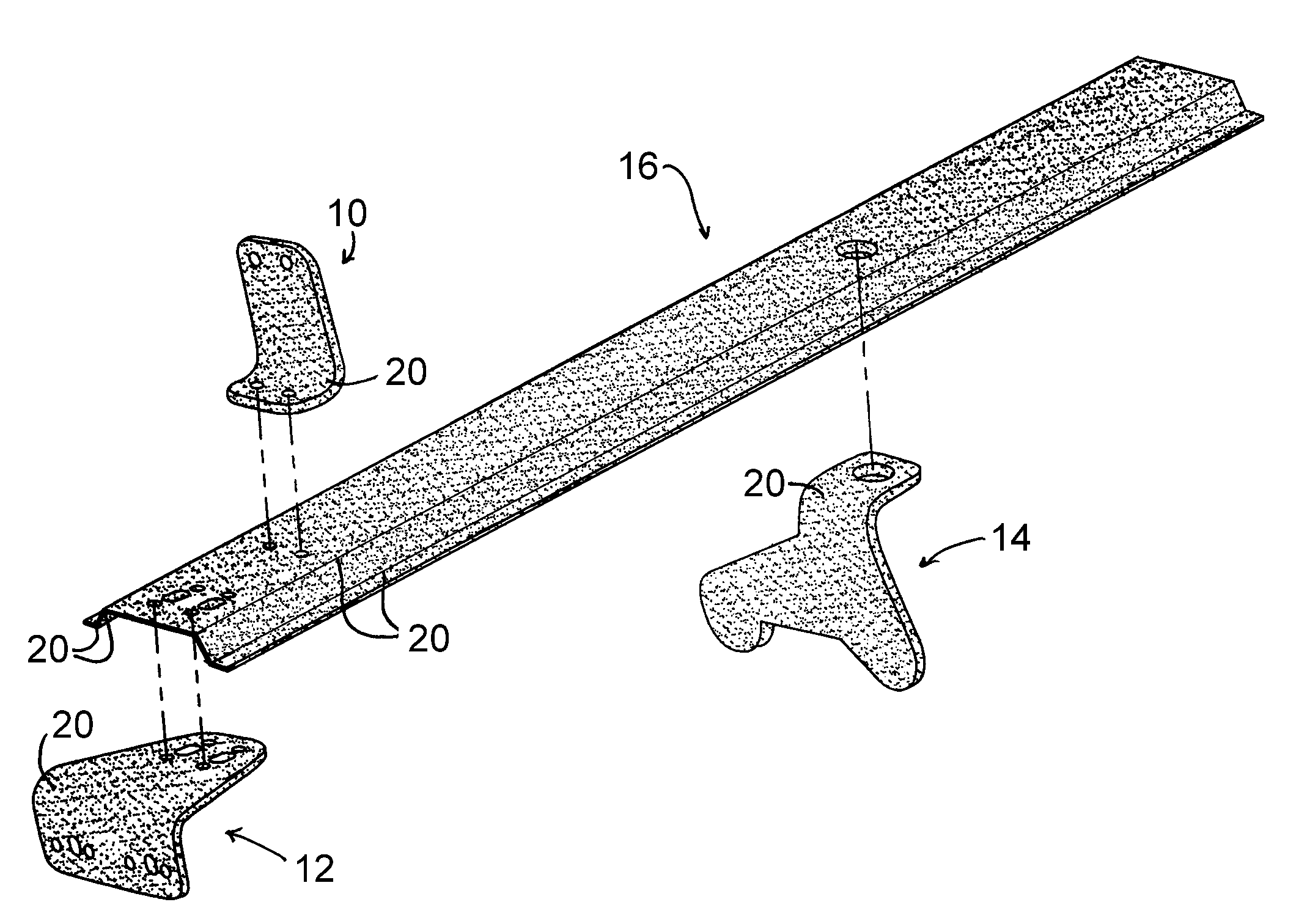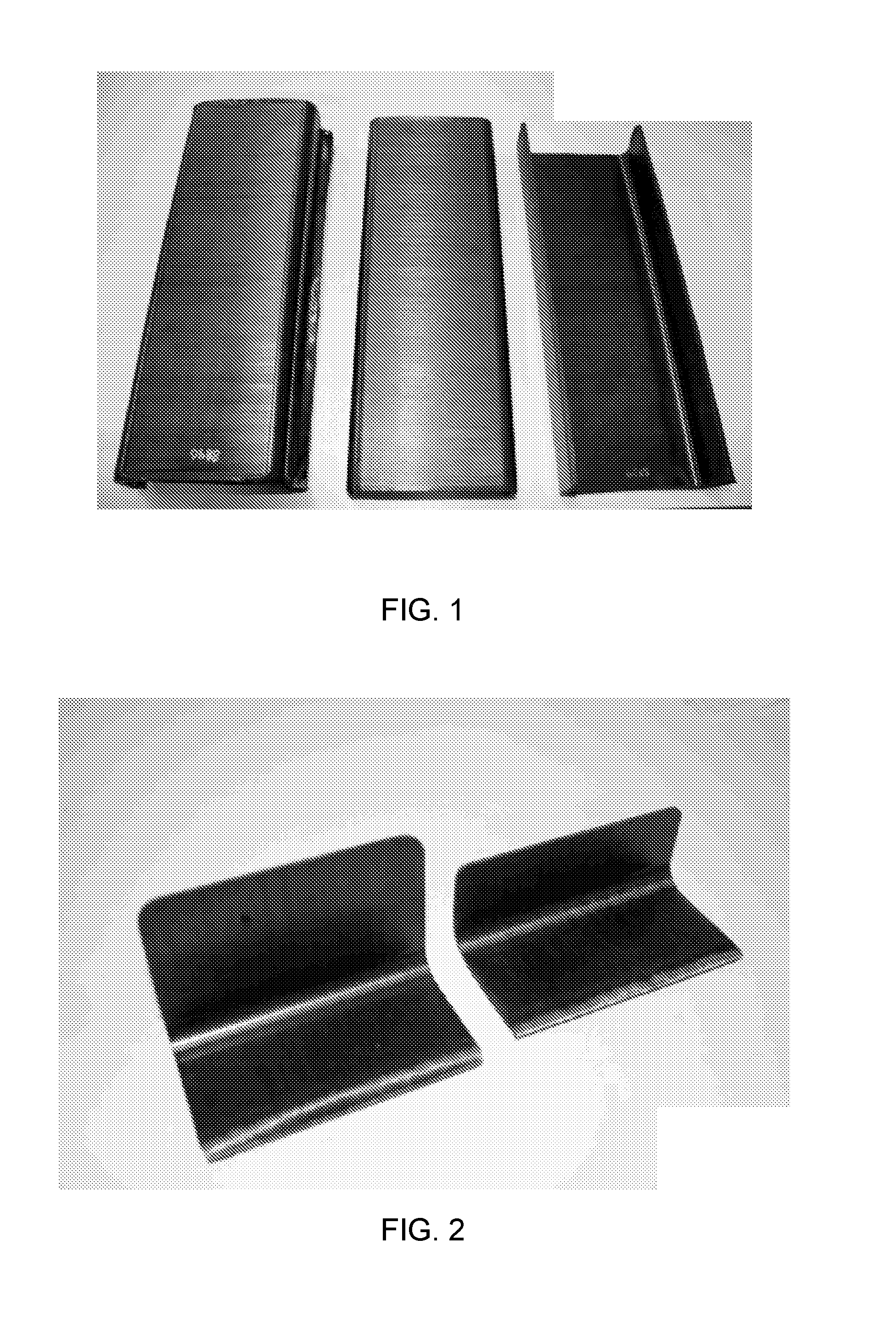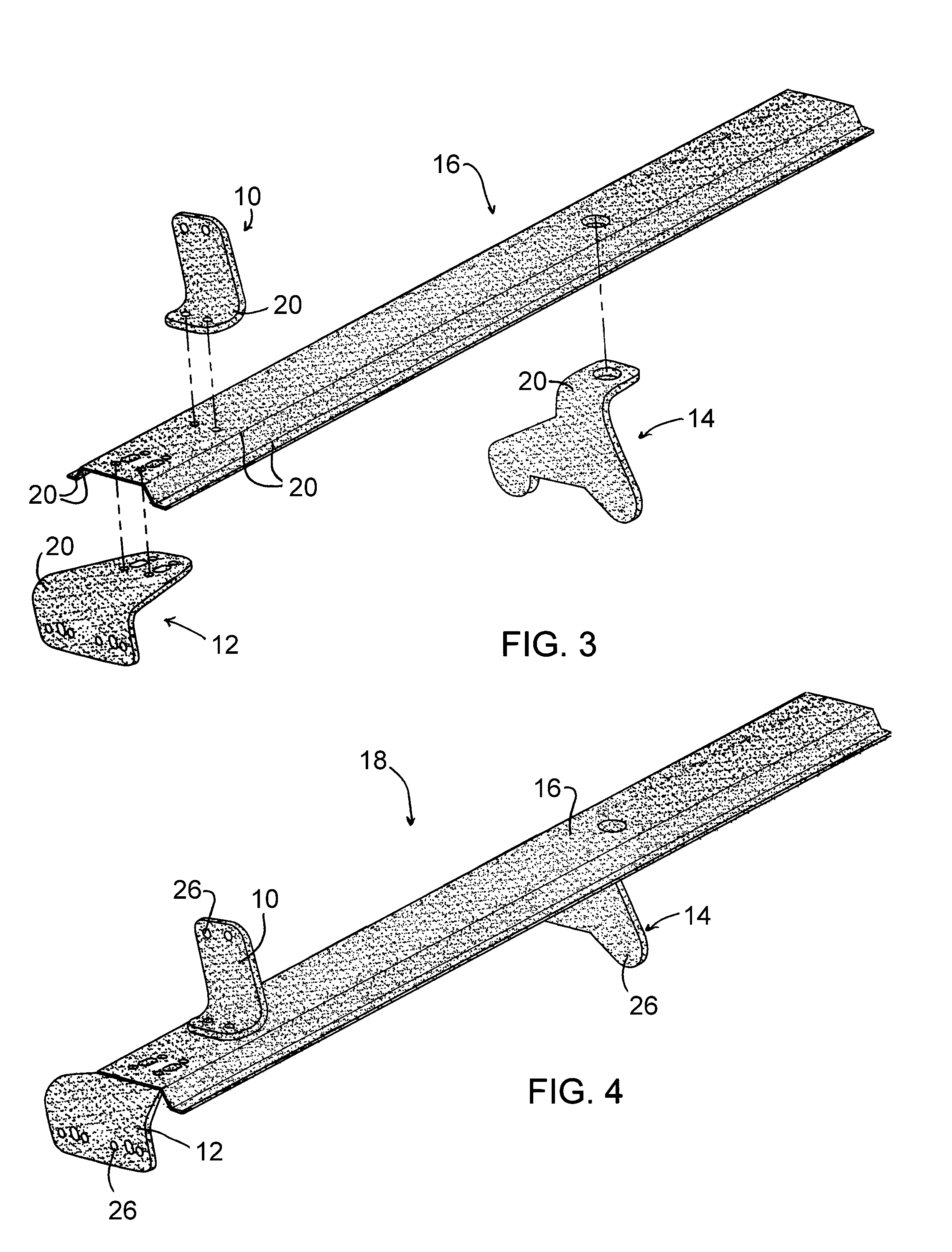Load-bearing structures for aircraft engines and processes therefor
a technology for aircraft engines and load bearings, applied in the direction of machines/engines, applications, machine supports, etc., can solve the problems of complicated cost-effectiveness of producing brackets from these materials, limited production range of pmcs formed with thermoplastic matrix materials, and cost prohibitive use of traditional thermoset resins to produce pmc brackets. , to achieve the effect of constant cross-sectional thickness, constant cross-sectional thickness, and constant cross-sectional thickness
- Summary
- Abstract
- Description
- Claims
- Application Information
AI Technical Summary
Benefits of technology
Problems solved by technology
Method used
Image
Examples
Embodiment Construction
[0018]The present invention will be described in terms of composite load-bearing structures that, though capable of being adapted for use in a wide range of applications, are particularly well suited as brackets whose primary purpose is to support or secure various components of aircraft engines, for example, components within the fan sections of high-bypass gas turbine engines. Particularly notable examples are brackets that are mounted on the exterior of the fan case and support components such as tubes, wiring harnesses, oil tanks, etc. However, various other load-bearing structures and various other applications to which the present invention could be applied are also within the scope of the invention.
[0019]The present invention provides a process by which brackets that exhibit mechanical, chemical and thermal properties (including strength, fatigue resistance, maximum temperature capability, chemical / fluid resistance, etc.) that are suitable for aircraft engine applications and...
PUM
| Property | Measurement | Unit |
|---|---|---|
| thickness | aaaaa | aaaaa |
| temperature | aaaaa | aaaaa |
| thickness | aaaaa | aaaaa |
Abstract
Description
Claims
Application Information
 Login to View More
Login to View More - R&D
- Intellectual Property
- Life Sciences
- Materials
- Tech Scout
- Unparalleled Data Quality
- Higher Quality Content
- 60% Fewer Hallucinations
Browse by: Latest US Patents, China's latest patents, Technical Efficacy Thesaurus, Application Domain, Technology Topic, Popular Technical Reports.
© 2025 PatSnap. All rights reserved.Legal|Privacy policy|Modern Slavery Act Transparency Statement|Sitemap|About US| Contact US: help@patsnap.com



